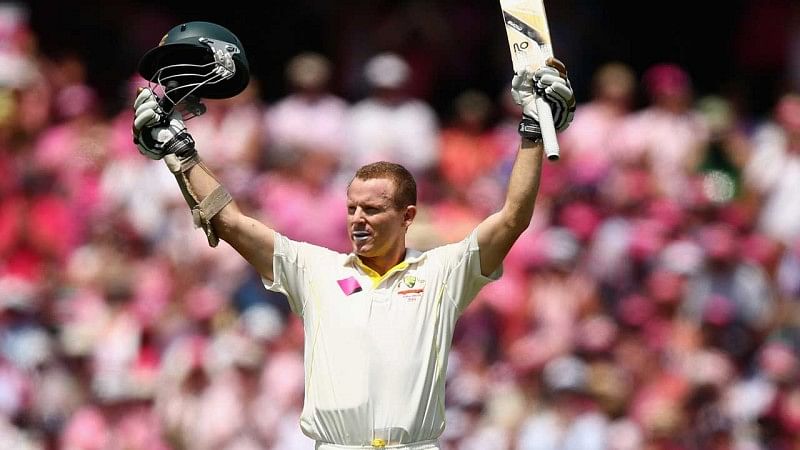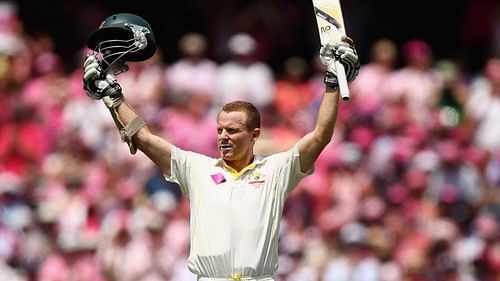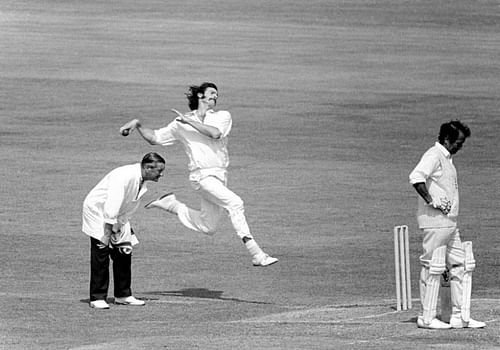
Chris Rogers - The cricketer who deserved more than what he got

Don’t cry because it’s over. Smile because it happened.
Cricket is a rather volatile animal. Batsmen come in all shapes and forms - the attacking stylish strikers (Brian Lara, Sachin Tendulkar, Ricky Ponting), the big, broad bat technicians, who, though not as conventionally attractive, made a career out of sticking at the wicket (Sunil Gavaskar, Geoffrey Boycott, Allan Border...Michael Atherton), the players whose brash self-confidence, nonchalance and seductive swagger won them the favour of aficionados and journalists alike, and an equal number of detractors who feel they were too much in love with themselves (Imran Khan, Michael Slater, Kevin Pietersen).
Then there are the others. You know those kinds. No frills, no fanfare. Would much rather do their talking with the bat in hand and chalk underfoot. They do what is asked of them and it is a testament to their skill and application that these unobtrusive kinds leave their indelible stamp on the face of a game which can be downright cruel at times.
Some, like Rahul Dravid and Jacques Kallis, play long enough, play well enough and play well enough for long enough to be remembered as greats of the game, as players who made us fans see past all the drama and all the hype to appreciate the meat and potatoes of the sport.
Others, like Christopher Rogers, do not.
An unfavourable pecking order
This, it must be understood, is through little fault of his own. Rogers is simply another in a long, long line of cricketers who just could not displace a superlative generation of Australian sportsmen from the side even to the point of semi-permanency.
Cases in point: Darren Lehmann scored 10,000 first class runs before debuting for Australia, Adam Gilchrist only debuted for the Test team at 28, Michael Bevan, Ed Cowan, David Hussey, Stuart Law (a perfect example), Brad Hodge, and even Damien Martyn, really, who was picked, dropped quickly, spent several years in the wilderness before returning for a reasonably fair shot in 2000.The list is endless.
The old guard at Cricket Australia isn’t simply binned willy nilly. But sometimes even an edict issued with the best intentions of giving senior cricketers their due respect can have some detrimental effects - it means that even the superior domestic breed isn’t given an extended chance.
At times, you wonder how much this isolation from the national setup affects such players. You consistently register an average of 50+ domestically over a number of seasons? Not so fast! Matthew Hayden hasn’t retired yet. Back of the line, mister!
Playing for their country should be every cricketer’s dream. It should be appreciated for the privilege it is and as a moment of immense pride to hear your national anthem blaring on the loudspeaker as you stand shoulder-to-shoulder with your teammates.
There are few moments in the sphere of human achievement that can match that sheer, unbridled feeling of patriotism. Cricket, however, is never quite as idealistic or as straightforward.
I imagine it would be especially cruel for those who get a taste of that moment all too briefly, and then have it taken away from them, never to return. Some, like Luke Ronchi, realise that it’s just not going to happen for them and have the benefit of jumping to New Zealand.
Others, like Christopher Rogers, do not.
The ‘wrong’ kind of hero
Simon Hughes (The Analyst) once spoke of how the archetype of the Australian sporting hero has changed significantly over the years; the Depression era was when the Don reigned supreme.
In the 1970s, it was the swaggering Dennis Lillee with muscular arms and a fearsome moustache. And by the late 1990s, Lillee had morphed into Shane Warne, a portly everyman with a thick accent and thinning blonde patch who liked his beer and turned the ball with purpose.

The new millennium brought with it a different sort of image. Now, the Australian sporting hero was lean, mean and punishing of any complacency.
Ricky Ponting’s bloody mindedness and venomous pull shot was symbolic of a new breed in Australian cricket. Only excellence is tolerated. You refit yourself into the team dynamic. The team does not bend over backwards to please your highness.
A second chance
But then, that great generation retired en masse. The old was replaced by the new. And slowly but surely, Australia’s position at the centre of the cricketing cosmos was eroded.
The world no longer seemed subject to their control. Australia had been gutted like a fish multiple times over the past few years, and the reintroduction of Chris Rogers was the product of a lot of soul searching.
His style looked all wrong. It would have looked more appropriate 25 years ago, in the company of the combative Allan Border or Steve Waugh.
But he worked. And Australian cricket, which had reached a pretty low ebb by the 2013 Ashes, needed people who worked.
It was a wonderfully convenient confluence of circumstances. The team needed new faces, and also a solid willow-wielder at the top of the order. Rogers ticked both boxes and also brought a wealth of experience with him.
He was a prolific run-scorer on the domestic scene, and this was coupled with several years of county experience in England, first with Northamptonshire and more extensively with Middlesex.
Those who paid regular pilgrimage to Lord’s would be familiar with his style, but Rogers’ re-entry into the Australian team showcased his strengths to a wider audience.